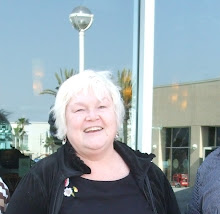
Second Life is addictive, creative, and social. While it may require basic knowledge of how things work to make the laws of nature different, it seems to have unlimited possibilities to reinvent yourself and the world in which you live, all for $1,000.00 down and a couple a hundred a month. Philip Rosedale, the man who created Second Life, in The Disruptive Power of Second Life says it is a bottom- up situation where digital people create, buy and sell digital items; it allows people the fundamental freedom to create. However, we may prefer our digital selves over our real selves. Regardless of the possible downsides, according to Rosedale it is unstoppable, inevitable, and disruptive.
It is much like the Internet and the Web in the early ‘90s. People can put themselves forth in the form of an avatar that is who they want to be, not who they are. It replaces cities, simulates space. Users create data that they can sell to earn real or digital money; people can build houses, businesses, and events anywhere. You can even have a baby, a digital baby, in Second Life. There is no structure to this game that is not a game. The economy of the game drives what people create; they want to sell their creations to exist in their virtual world.
Social creatures need others to learn, recommend, and experience information together. This may be the essence of constructivist learning. While this seems no more harmful than television in many ways for adults, is it applicable to people who are not adult learners?

Cyndy--your final question is easily addressed if you spend time around younger kids: they are just as happy interacting online or through other media as they are conversing. Ever watched a group of young girls with cell phones texting with one another even though they are sitting at the same table?
ReplyDeleteI encourage you to check out http://www.twitchspeed.com/site/news.html
and also Google Marc Prensky for more info on how adult and not so adult learners construct learning via technological means.
Anne,
ReplyDeleteCertainly the multi-tasking elements of Second Life are applicable to the desires of the that age group. But I still wonder if these young'uns will be3 able to manage their own learning without adult guidance. I am reluctant to let go of the idea that they will need teachers.
Cyndy, Love the graphic! Teachers will always be needed. Everyone in society is a teacher-mothers, doctors, cafeteria workers,etc... Teacher will still have jobs, they are the expert in the "curriculum" field, but I do believe their roles will change. Skyping with you helps me to see that. I know younger children need more one-on-one guidance, so maybe their caregiver will take on the role of some of the classroom management positions. Deb :)
ReplyDeleteSecond Life is definitely an addictive, creative and social online environment. In this virtual environment, there are definitely unlimited possibilities. Individuals have the opportunity to explore different things that may actual help with decisions in their futures. Disruptive technologies can cause a change or paradigm shift in business partners, markets, and even in the lives of individuals. As of right now, I don’t see a technology that Second Life fully replaces. Many times, two technologies can evolve together.
ReplyDelete